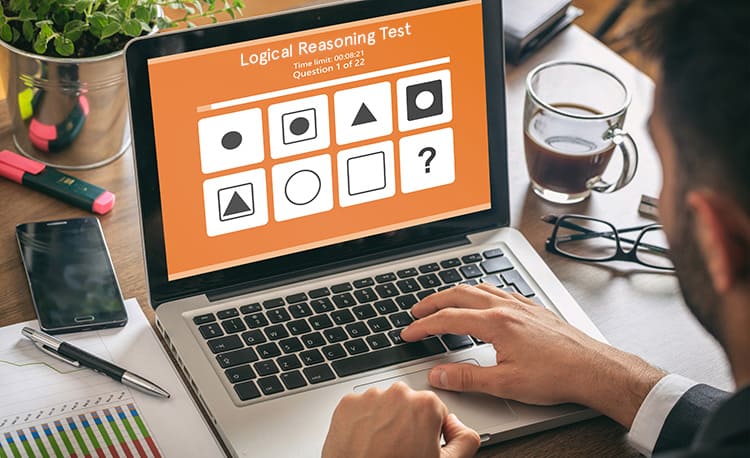High-Level Reasoning Questions for Experts
Reasoning forms the backbone of critical thinking, decision-making, and problem-solving in both academic and professional spheres. For experts, reasoning questions are not just about arriving at an answer but about employing advanced strategies, recognizing subtle patterns, and applying multi-layered logic under time constraints.
High-level Reasoning Questions often appear in competitive exams, elite job interviews, research work, and fields requiring analytical prowess. This article explores challenging reasoning question types designed for experts, providing examples and detailed solutions to enhance your skills and prepare you for the toughest tests.
Why Focus on High-Level Reasoning?
- Refines analytical skills: Experts must analyze complex scenarios quickly and accurately.
- Enhances problem-solving: These questions require multi-step reasoning and creative approaches.
- Prepares for elite exams: Exams like CAT, GRE, GMAT, UPSC, and top-tier corporate interviews include advanced reasoning.
- Develops precision: Precision in logic reduces errors under pressure.
- Boosts cognitive endurance: Tackling tough questions builds mental stamina.
Categories of High-Level Reasoning Questions
- Complex Logical Puzzles
- Advanced Syllogisms
- Blood Relation Chains
- Data Sufficiency
- Seating Arrangements and Scheduling
- Coding-Decoding with Multiple Rules
- Critical Reasoning and Assumptions
- Mathematical Reasoning and Number Patterns
Let’s explore each category with examples and detailed solutions.
1. Complex Logical Puzzles
These puzzles involve multiple variables and conditions, requiring careful analysis and deduction.
Example:
Five friends (A, B, C, D, E) sit around a circular table facing the center. B is to the immediate right of A. C is opposite to E. D is between A and E. Who sits to the left of C?
Solution:
- Since the table is circular and everyone faces the center, “right” and “left” are relative to each person.
- B is immediate right of A → B sits clockwise next to A.
- C is opposite E → C and E are seated across from each other.
- D is between A and E.
Placing A and B accordingly and following the clues, the seating arrangement will be: A, B, D, E, C clockwise.
To the left of C (counterclockwise direction) is E.
Answer: E
2. Advanced Syllogisms
These involve multiple premises with universal and particular statements.
Example:
Statements:
- All engineers are scientists.
- Some scientists are artists.
- No artist is a doctor.
Conclusions:
I. Some engineers are artists.
II. Some scientists are doctors.
III. No engineer is a doctor.
Which conclusions follow?
Solution:
- From “All engineers are scientists,” engineers are a subset of scientists.
- “Some scientists are artists” means some overlap.
- “No artist is a doctor” means artist and doctor sets do not overlap.
- Conclusion I: Some engineers are artists? Not necessarily true.
- Conclusion II: Some scientists are doctors? No information about overlap, so cannot conclude.
- Conclusion III: No engineer is a doctor? Since engineers are scientists, and nothing says engineers can or cannot be doctors, but “no artist is doctor” does not relate directly to engineers.
So, none of the conclusions logically follow definitively.
Answer: None of the conclusions follow.
3. Blood Relation Chains
Expert-level questions involve multi-generation and gender-specific clues.
Example:**
Pointing to a woman, a man says, “She is the mother of the only son of my father.” How is the woman related to the man?
Solution:
- The man’s father’s only son is the man himself.
- The woman is mother of the man.
- So, she is the man’s mother.
Answer: Mother
4. Data Sufficiency
These questions test your ability to decide if given data is enough to answer a question, a key skill in exams like CAT and GMAT.
Example:
Is x > y?
I. x + y = 10
II. x – y = 2
Solution:
- From I alone, knowing only the sum doesn’t tell if x > y.
- From II alone, difference alone doesn’t tell if x > y.
- Combining I and II:
From I: x + y = 10
From II: x – y = 2
Adding both equations: 2x = 12 → x = 6
Substitute back: 6 + y = 10 → y = 4
Since 6 > 4, x > y.
Answer: Both statements together are sufficient.
5. Seating Arrangements and Scheduling
These involve complex arrangements with multiple constraints.
Example:
Seven people (P, Q, R, S, T, U, V) sit in a row. T sits to the left of U but right of Q. R sits to the right of V but left of S. P sits to the right of S. Who sits in the middle?
Solution:
- T is between Q and U (Q < T < U).
- R is between V and S (V < R < S).
- P sits to the right of S (S < P).
Try placing them in order:
Q < T < U
V < R < S < P
Since 7 people in total, one order can be: Q, T, U, V, R, S, P
Middle position (4th) is V.
Answer: V
6. Coding-Decoding with Multiple Rules
Rules may combine letter shifting, reversing, or substitution.
Example:
If “EXAM” is coded as “YZNV,” what is the code for “TEST”?
Solution:
- E(5) → Y(25)
- X(24) → Z(26)
- A(1) → N(14)
- M(13) → V(22)
Pattern involves subtracting the letter’s position from 30 (or reflecting in alphabet):
E(5) → 30-5=25 → Y
X(24) → 30-24=6 (F) but coded as Z? So check if reverse mapping applies differently.
Check positions carefully:
If we map letters by 27 – position:
E=5 → 27-5=22 → V, but coded as Y(25).
So possibly adding a fixed shift after reverse.
Another approach: Reverse alphabet position:
A=1 maps to Z=26
So 26 – (letter position – 1)
Try for E: 26 – (5-1) = 26 – 4 = 22 (V) but coded as Y.
This is complex and may combine multiple steps.
For “TEST”: Apply similar logic (Experts often decode such by recognizing pattern).
7. Critical Reasoning and Assumptions
Questions where you analyze arguments, assumptions, or conclusions.
Example:
“Only employees with more than 5 years of experience will get promoted.” What assumption is made?
Solution:
The assumption is that experience is the only criterion for promotion.
8. Mathematical Reasoning and Number Patterns
Involving prime numbers, factorials, complex series.
Example:
Find the next number in the series: 2, 6, 12, 20, 30, ?
Solution:
Difference between terms: 4, 6, 8, 10… increases by 2.
Next difference: 12
Next number: 30 + 12 = 42
Strategies for Tackling High-Level Reasoning Questions
- Analyze all given conditions carefully: Missing even one can lead to wrong conclusions.
- Use diagrams and tables: Visual aids help track information clearly.
- Break complex problems into smaller parts: Solve step by step.
- Eliminate impossibilities: Narrow down options logically.
- Practice regularly: Familiarity with question types reduces solving time.
- Stay calm and focused: Complex questions test endurance as much as logic.
Practice Set for Experts
- In a family, A is the son of B. C is the father of B. D is the daughter of C. How is D related to A?
(Answer: Aunt)
- If 3x + 2y = 12 and x – y = 1, find x and y.
- Seven people sit around a table. Q sits opposite P. S sits to the immediate right of Q. Who sits to the left of P?
- Decode the word “BRIGHT” if each letter is shifted forward by 3 and then reversed.
- Find the next number: 1, 8, 27, 64, ?
Conclusion
High-level reasoning questions challenge even the sharpest minds. They require a blend of logical clarity, strategic thinking, and patience. Experts improve by regular practice, analyzing mistakes, and refining techniques. The ability to solve these questions quickly and accurately opens doors to top competitive exams, career opportunities, and intellectual growth.
If you are preparing for advanced reasoning tests, start incorporating complex puzzles, data sufficiency, and critical reasoning questions into your study routine. Use the examples and strategies here to sharpen your skills and elevate your problem-solving abilities.







